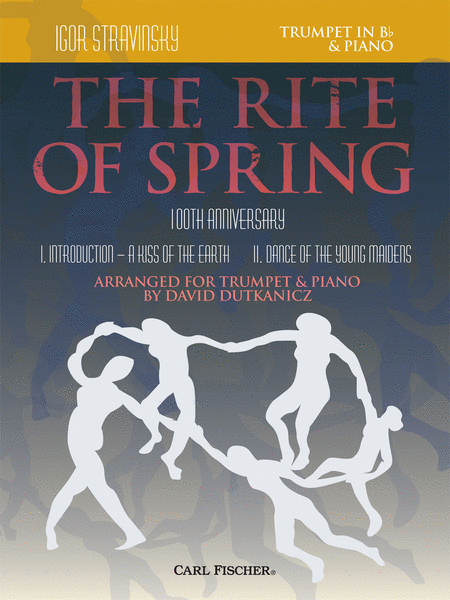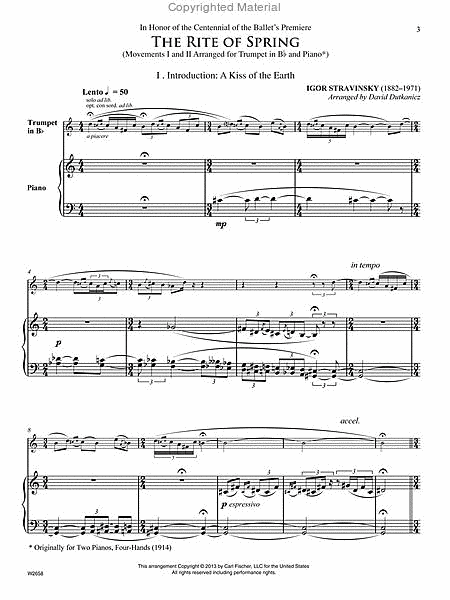The Rite of Spring
100th Anniversary
-
Ships in 1 to 2 weeks
Details
Description
SKU: CF.W2658
100th Anniversary. Composed by Igor Stravinsky. Arranged by David Dutkanicz. SWS. Set of Score and Parts. With Standard notation. 20+8 pages. Duration 7 minutes. Carl Fischer Music #W2658. Published by Carl Fischer Music (CF.W2658).ISBN 9780825891137. UPC: 798408091132. 9 x 12 inches.
On May 29, 1913, an over-capacity audience in Paris’ Théâtre desChamps-Élysées witnessed an historical spectacle as they became a brutecatalyst in the most (in)famous opening night of the twentieth century.The Rite of Spring premiered that evening in the midst of a riot inspiredby the overwhelming primitivism both onstage and in the score.One-hundred plus years later, the music still incites the senses. The balletwas first published in 1914 in a reduction for two pianos, and serves asa basis for this arrangement. This edition is presented in honor of thecentennial of the ballet’s premiere, and is intended to give soloists andaccompanists a chance to perform this monumental work.
On May 29, 1913, an over-capacity audience in Paris’ Théâtre des Champs-Élysées witnessedan historical spectacle as they became a brute catalyst in the most (in)famous opening nightof the twentieth century. The Rite of Spring premiered that evening in the midst of a riotinspired by the overwhelming primitivism both onstage and in the score. Subtitled “Picturesof Pagan Russia,” the ancient scenes were evoked using contemporary musical innovations,shattering expectations of a more traditional Ballet Russe production.How was an ancient ritual of sacrifice to the earth to be scored? The unevolved pesantecharacter of a village gathering was portrayed by odd time signatures and accents. Melodieswere geometrically woven as dissonant pastorales with grace-notes mimicking gutturalbreaks in primal voices. Instruments were orchestrated against the grain, straining soundsinto unrecognizable timbres. And just like the dancers on stage, musicians were organizedinto alternating groups often clashing with one another.One-hundred plus years later, the music still incites the senses. The ballet was first publishedin 1914 in a reduction for two pianos, and serves as a basis for this arrangement. This editionis presented in honor of the centennial of the ballet’s premiere, and is intended to give soloistsand accompanists a chance to perform this monumental work. Both movements may beplayed alone, and the first movement may also serve as a solo piece.


 Share
Share